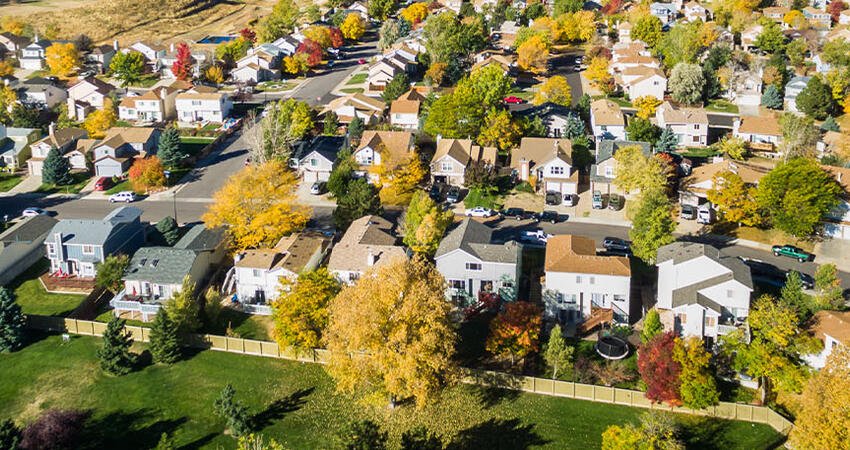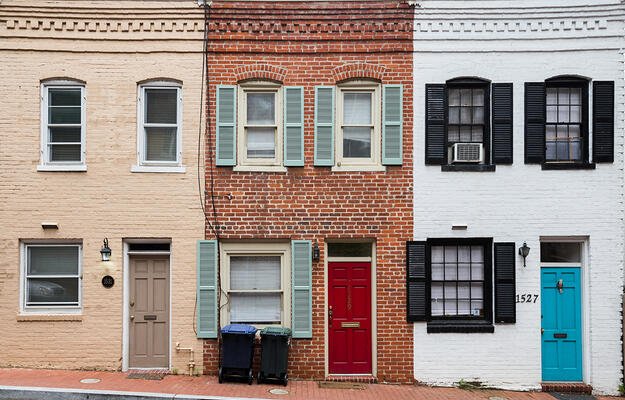
How Zoning Shapes our Lives
by Maya Brennan, Emily Peiffer, and Kimberly Burrowes
Zoning rules dictate more than just how we can use and build on land. They also shape our communities and our lives. Land use laws determine where we can find housing, schools, and parks—and who has access to them.
Policymakers initially created zoning codes to protect public health—for example, to stop residents from getting sick from living too close to factories. But from the start, zoning has separated more than just land uses. It has also separated people.
In the early 20th century, many communities explicitly used zoning ordinances to racially segregate neighborhoods. By the late 20th century, civil rights legislation outlawed overt housing discrimination. But those explicit racial barriers were quickly replaced by subtler methods.
Even today, exclusionary zoning policies that restrict lower-cost or higher-density housing options—such as requirements for large minimum lot sizes and prohibitions of multifamily housing—limit racial and economic diversity and raise housing costs. Once established, residential segregation persists and slows economic mobility for residents of all races.
But these effects aren’t inevitable. By understanding zoning’s role in our lives, we can look for ways to make land use laws and policies more inclusive and leverage them to connect, rather than divide, our communities.
Zoning’s impact on neighborhood disparities, housing costs, and economic mobility
Overly restrictive or exclusionary zoning makes it difficult for low-income households and people of color to live in communities with equal access to opportunities and amenities. In addition to limiting wealth-building opportunities, residential segregation undermines access to available jobs, high-quality schools, and healthy, safe environments.
By treating multifamily housing as incompatible with single family housing, zoning often pushes multifamily buildings closer to highways and areas with a higher risk of air pollutants. As a result of living closer to highways and other sources of air pollution (PDF), low-income people and people of color are more likely to live in places that exacerbate asthma risks and poor birth outcomes.
Black households, regardless of income, are 1.5 times more likely than US households in general to be exposed to environmental hazards like poor air quality and polluted water. And many neighborhoods with large shares of low-income residents and residents of color lack services that support better health, such as grocery stores with healthy food options (PDF).
Restrictive zoning limits the housing supply and raises housing costs for both homebuyers and renters. Research on land use regulations in California found that each regulation added more than 2 percent to local rents and more than 4 percent to home prices. Taken together, land use regulations may account for up to half of the price of rents in the highest-cost cities.
Zoning regulations may also increase the cost of entry to suburban areas and limit education opportunities, predominantly for black and Latinx families. In places with exclusionary zoning policies, many low-income families can’t afford to live in high-performing school districts that could offer more enrichment opportunities for their children.
When zoning restricts where people live and makes buying a home too expensive, it limits both short-term and long-term upward economic mobility. In many cities, low-income and black residents often live far from available jobs, and employers struggle to find people to fill open positions. Meanwhile, more equitable zoning can play a key role in addressing the racial gap in homeownership and improve outcomes for children, especially children of color.
What can we do?
The ramifications of neighborhood segregation resulting from exclusionary zoning practices not only disadvantage residents, but they accumulate over generations.
It doesn’t have to be this way. Zoning can encourage inclusion, create opportunity, protect open spaces, and prevent truly incompatible land uses from sharing the same space. When done thoughtfully, zoning can connect people and places, not just divide us.
Communities across the US are beginning to reexamine the role of zoning and change the rules. With better data on the effect of zoning on people’s lives, we can better quantify the problem and offer solutions. We have a long way to go, but continuing to understand and improve zoning rules has far-reaching benefits. Whether communities want to improve health equity, school access, job opportunities, or economic inclusion, zoning matters.
Photo by Arina P Habich/Shutterstock


